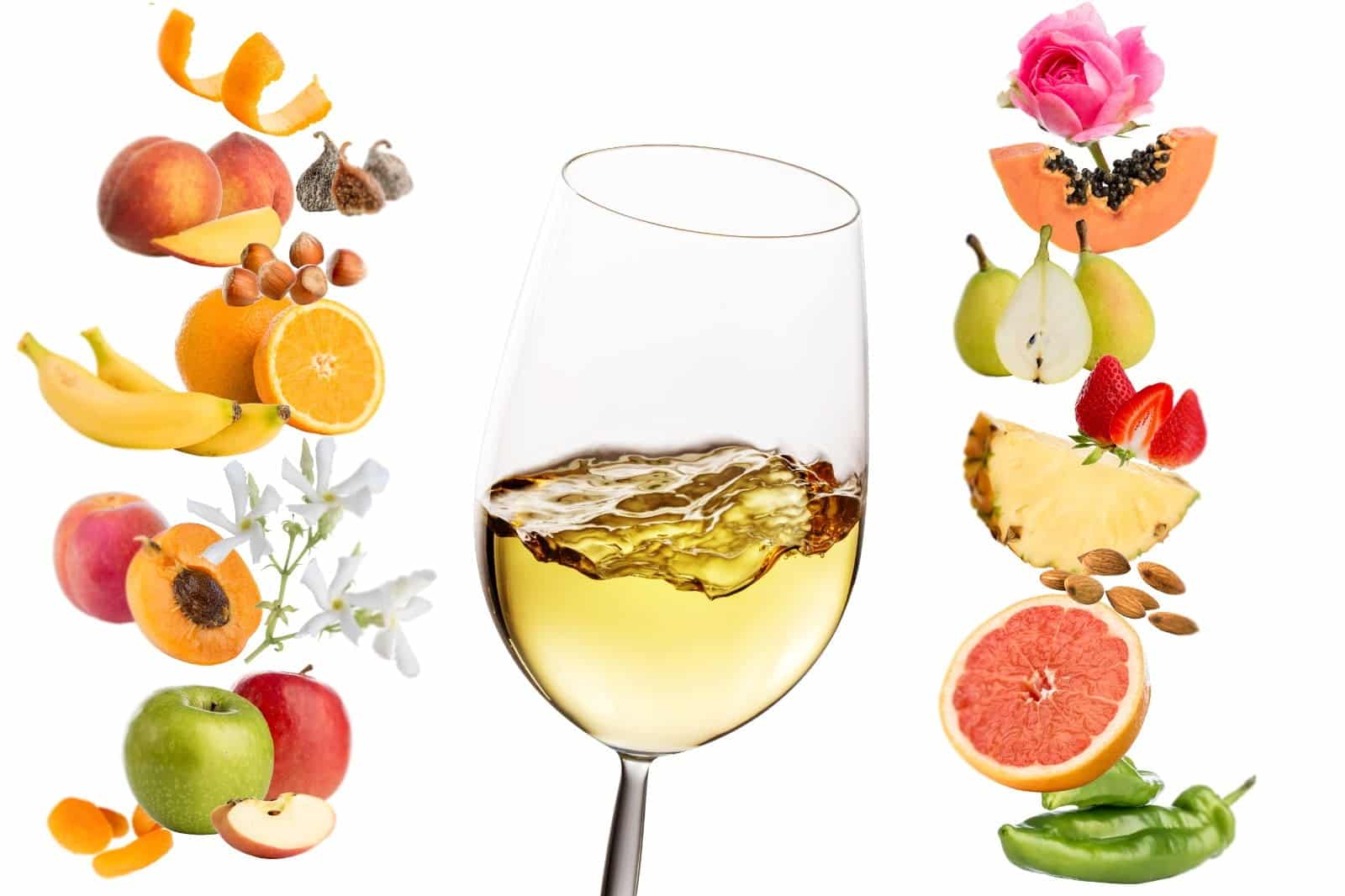The descriptive language of wine tasters can be laughed at by an uninitiated audience. Associations with objects, sensations, moments of life, sometimes seem extreme or at least exaggerated, when describing the Bahian liquor in the glass. I mean, "the smell of dry hay on a September morning" might be a believable description for a sip of Pinot gris? Either the taster is a poet, or the oenologist is a scammer, that he could make such an olfactory picture out of some grapes.
It seems the truth is somewhere in the middle. Today, research has identified at least a thousand volatile compounds that contribute to the flavour complex of wines.
The compounds that give odours are molecules of organic or inorganic chemicals, and the associations with perceived olfactory sensations depend on the knowledge we have acquired throughout our lives. For example, the scent of a rose is made up of about a hundred molecules[1]. But if we only know the classic rose scent, it would be hard to say that the wine smells like Damask rose or hybrid garden rose. The smell of grapefruit does not exist as such in nature, but the fruit and wine in which we find this "smell" is most likely to contain the same chemical compound that reveals the associated olfactory sensation.
We humans are different from each other not only structurally, but also physiologically. We have a "threshold of perception" that can vary from one human to another or from one chemical compound to another. It should also take into account anosmia. For example, the smell of sulphur released by urine after eating asparagus is only perceived by a handful of lucky (or unlucky!) people. Isoamyl acetate smells like banana or strawberry. The taster will decide for one or the other of the two, or will nominate both, depending on how strongly he feels the odorous compound. Or the case of beta-ionone, which gives the smell of violets and is perceived by about 60% of people, the rest being insensitive to it and unable to detect it in wines. The smell of cinnamon comes close to the smell of mango or lavender. However, none of these flavours belong to the same aromatic family[1]. The choice depends on the olfactory culture of the taster.
It is said that a good wine should smell like wine, hence the adjective "vinous". But what does a proper wine smell like? First of all it depends on the grape variety, then on the ripeness of the grapes at harvest, the winemaking techniques and last but not least on the age of the wine. Smells in wine can be of a positive nature, when they are called AROMAS and usually classified as primary, secondary and tertiary, or of a negative nature, when they are classified as defects.
Flavour classification is done by dominant groups[2]:
- Spicy (spices – aniseed, cinnamon, cardamom, cloves, coriander, cumin, tonka, juniper, ginger, nutmeg, pepper, saffron, vanilla and herbs – basil, lemongrass, tarragon, cloves, lovage, marjoram, peppermint, parsley, rosemary, sage, thyme, verbena)
- Floral (garden flowers – peonies, lilies, carnations, irises, lavender, lavender, musk, chamomile, daffodils, roses, violets, hyacinths; shrub flowers – bucsau (poppy broom), honeysuckle (mother-of-pearl), jasmine, lily of the valley; tree flowers – lilac, magnolia, orange, salcam, elder, lime)
- Animal (amber, beaver, beeswax, civet, skin, flesh, glandular remains – musk, sweat, feathers)
- Wood (cedar, chestnut, incense sticks, eucalyptus, cork, acorn, pine, sandalwood, woodleaf ash, thuja)
- Dairy (butter, cheese, milk)
- Empyreumatic (cocoa, coffee, caramel, chocolate, birch tar, toast)
- Fruity (stone fruits – almonds, hazelnuts, walnuts, coconut, green olives, apricots, cherries, peaches, plums, prunes; semi-fruits – quince, pears, green apples, overripe apples, figs, mirabelle plums; berries – currants, strawberries, raspberries, blackberries, blueberries, raisins; exotic fruits – pineapples, bananas, passion fruit, lychees, mangoes, melons, watermelons; citrus fruits – bergamots, lemons, limes, tangerines, oranges, grapefruit)
- Vegetable (fresh greens – cashew buds, boxwood, celery, raw cabbage, cucumber, fennel, fresh grass, ivy, onion, garlic, peas, green peppers, rhubarb, soybean buds; dried vegetables – fenugreek, fucus (brown seaweed), patchouli, licorice, tobacco, black tea, green tea, vetiver; champignon mushrooms, yeasts, truffles)
- Mineral (chalk, iron, iodine, petroleum, flint, peat)
However, the most bizarre smells are those given by defects.
* Overly aggressive smell of alcohol can be considered a defect;
* Smells from everyday life: rubber, stagnant water, swamp soil, matches, nail polish, acetone, the smell of soap – which has no place in wine; mercaptan; cork stopper smell (cork defect, given by the chemical TCA = trichloranisole)
* Known scents from the plant kingdom: vinegar, garlic, onion, mustard leaf;
* Smells from gastronomy: rancid butter, rotten egg, pickled cabbage.
Even though in reality, we all smell the same thing in a wine, we talk differently about our perception, which explains the differences in comments during a tasting. Wine education and culture schools try to standardize the descriptions of smells, tastes and other perceptible characteristics of wines, so that a common language, easily recognizable among specialists, ensures the understanding of the product when it is placed on the market.
Sources:
[1] https://wisp-campus.com/wine-aromas-where-do-they-come-from/?lang=en
[2] Pfister, R. – The scents of wine/ Smelling and understanding wine Delachaux et Niestle SA, Paris, 2013






